
Majestic Alcázar: Toledo's Crown Jewel
Discover Alcázar in Toledo: A historic fortress offering panoramic views, rich military history, and architectural grandeur in the heart of Spain.
The Alcázar of Toledo is a historic fortress that stands proudly on the highest point of the city, offering panoramic views of the surrounding landscape. This imposing structure, with its origins dating back to Roman times, has witnessed centuries of history, serving as a royal palace, a military academy, and now, a fascinating museum. Its thick stone walls and grand towers invite you to explore a bygone era of kings, knights, and epic battles. Inside the Alcázar, the Museum of the Army offers a deep dive into Spain's rich military history. As you wander through its vast halls, you'll encounter an impressive collection of artifacts, from ancient weaponry to detailed dioramas depicting significant battles. The museum is not only a testament to Spain’s martial heritage but also a reflection of the country's evolution over the centuries. Beyond its historical significance, the Alcázar is a symbol of Toledo's resilience and cultural wealth. The structure itself is an architectural marvel, combining elements of Roman, Gothic, and Renaissance styles. As you stroll around its courtyards and corridors, you'll be captivated by the intricate details and the sense of grandeur that permeates every corner. Whether you're a history buff, an architecture enthusiast, or simply someone in search of breathtaking views, the Alcázar of Toledo is a must-visit destination that promises to leave a lasting impression.
Local tips in Alcázar
- Visit early in the morning to avoid crowds and enjoy a quieter experience.
- Wear comfortable shoes as there is a lot of walking and exploring to do within the fortress.
- Make sure to bring a camera for capturing the stunning views from the top.
- Check the museum's schedule for any special exhibitions or events during your visit.
- Allocate at least two hours to fully explore the museum and the fortress.
Majestic Alcázar: Toledo's Crown Jewel
The Alcázar of Toledo is a historic fortress that stands proudly on the highest point of the city, offering panoramic views of the surrounding landscape. This imposing structure, with its origins dating back to Roman times, has witnessed centuries of history, serving as a royal palace, a military academy, and now, a fascinating museum. Its thick stone walls and grand towers invite you to explore a bygone era of kings, knights, and epic battles. Inside the Alcázar, the Museum of the Army offers a deep dive into Spain's rich military history. As you wander through its vast halls, you'll encounter an impressive collection of artifacts, from ancient weaponry to detailed dioramas depicting significant battles. The museum is not only a testament to Spain’s martial heritage but also a reflection of the country's evolution over the centuries. Beyond its historical significance, the Alcázar is a symbol of Toledo's resilience and cultural wealth. The structure itself is an architectural marvel, combining elements of Roman, Gothic, and Renaissance styles. As you stroll around its courtyards and corridors, you'll be captivated by the intricate details and the sense of grandeur that permeates every corner. Whether you're a history buff, an architecture enthusiast, or simply someone in search of breathtaking views, the Alcázar of Toledo is a must-visit destination that promises to leave a lasting impression.
Iconic landmarks you can’t miss
Alcázar de Toledo
Explore Alcázar de Toledo, a historic fortress and museum offering stunning views and rich military heritage in the heart of Spain.
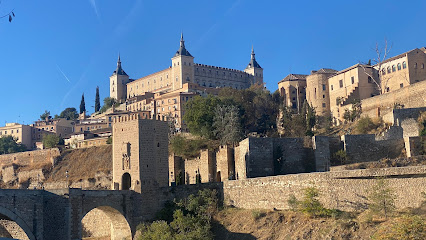
Mirador del Valle
Discover the breathtaking views of Toledo's skyline from Mirador del Valle, a must-visit vista point for every traveler.
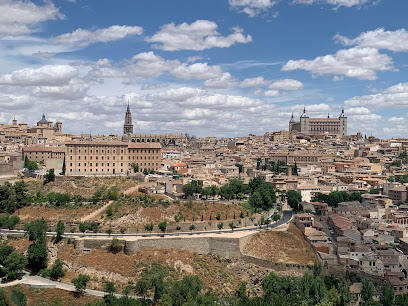
Alcantara Bridge
Discover the stunning Alcantara Bridge in Toledo, a historic Roman marvel offering breathtaking views and a glimpse into Spain's rich architectural heritage.
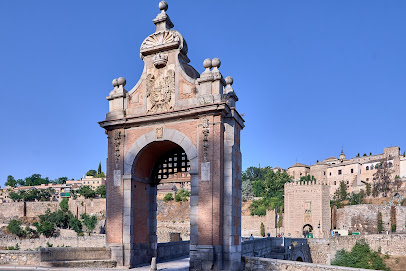
Monasterio de San Juan de los Reyes
Discover the architectural beauty and rich history of Monasterio de San Juan de los Reyes, Toledo's premier Gothic landmark and spiritual haven.
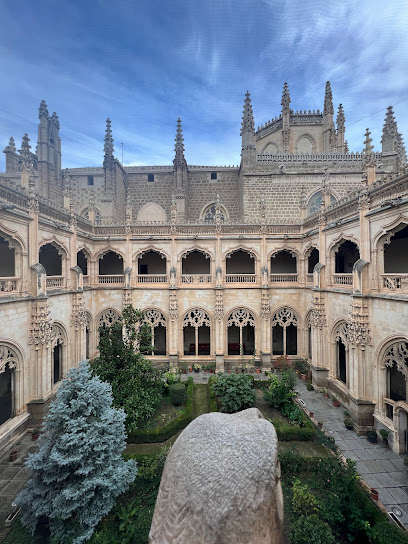
Army Museum
Immerse yourself in Spain's military history at Toledo's Army Museum, featuring extensive exhibits on artifacts, uniforms, and the valor of the armed forces.
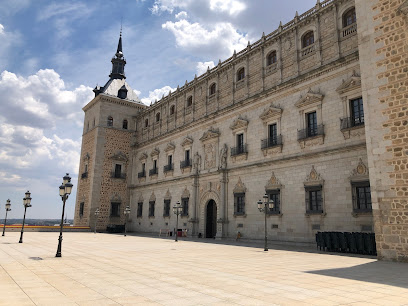
Puerta del Sol
Experience the vibrant atmosphere and rich history of Puerta del Sol, the iconic heart of Toledo, Spain, where culture and architecture converge.
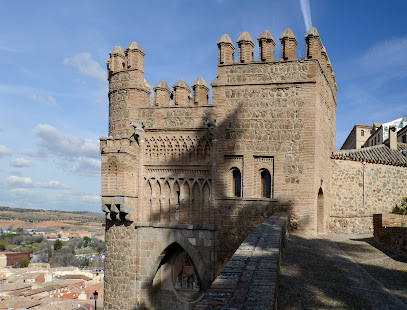
Mirador del Alcázar
Discover breathtaking views of Toledo's historic skyline at the Mirador del Alcázar, a scenic observation deck that showcases the city's rich heritage.
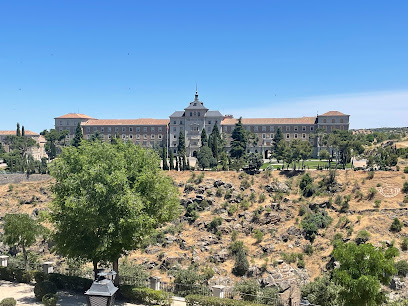
Monumento a la gesta del Alcázar
Explore the Monumento a la Gesta del Alcázar in Toledo, a magnificent sculpture honoring the courage of those who defended the Alcázar during the Spanish Civil War.
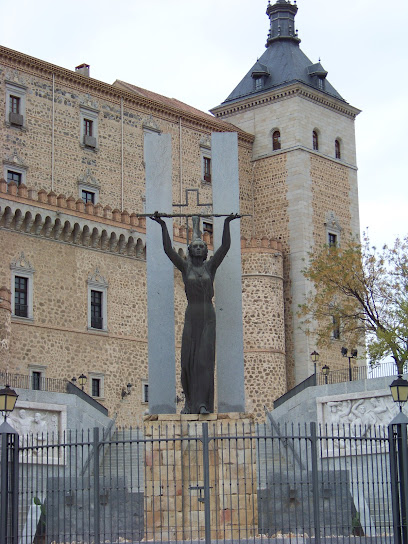
Plaza de Santa Catalina
Experience the historical charm and vibrant culture of Plaza de Santa Catalina in Toledo, Spain, a must-visit landmark for all travelers.
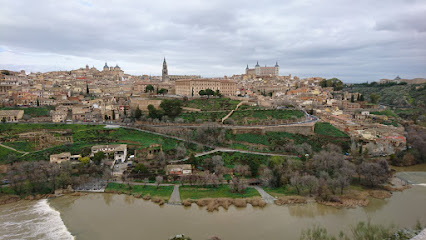
Edificio Alcazar
Explore Edificio Alcazar in Toledo, a historic treasure showcasing stunning architecture and panoramic views of the city's rich heritage.
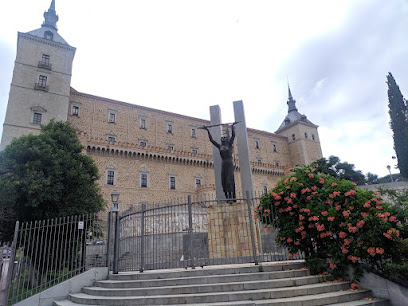
Unmissable attractions to see
Alcázar de Toledo
Discover the Alcázar of Toledo, a historical fortress and museum that reveals the rich cultural heritage of Spain amid breathtaking views.

Santa Iglesia Catedral Primada de Toledo
Discover Toledo's stunning Santa Iglesia Catedral Primada, a Gothic masterpiece rich in history and artistic treasures.
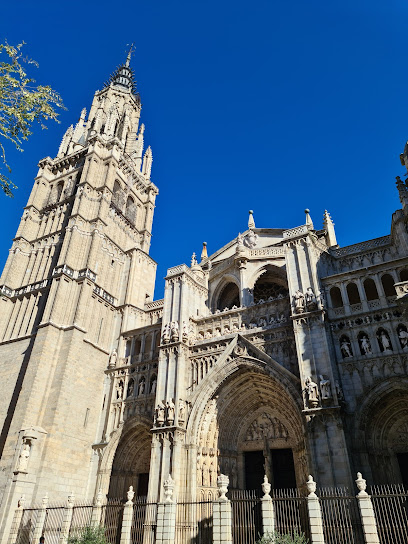
Alcantara Bridge
Explore the ancient beauty of Alcantara Bridge, a historical landmark in Toledo, offering stunning views and rich tales from the past.
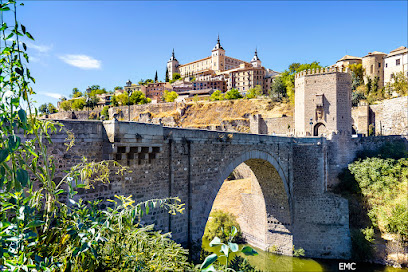
Monasterio de San Juan de los Reyes
Discover the Monasterio de San Juan de los Reyes, a stunning Gothic monastery in Toledo, rich with history and architectural beauty, perfect for cultural exploration.
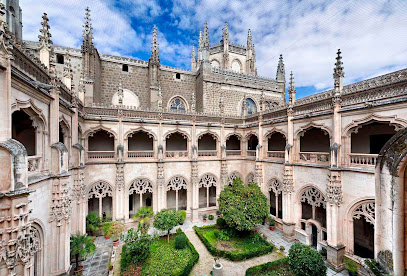
Army Museum
Explore Spain's military history at the Army Museum in Toledo, an essential stop for history lovers and curious travelers seeking cultural insights.

El pozo de los deseos R.Saavedra
Experience the magic of El Pozo de los Deseos in Toledo, where wishes come true amid stunning architecture and serene gardens.
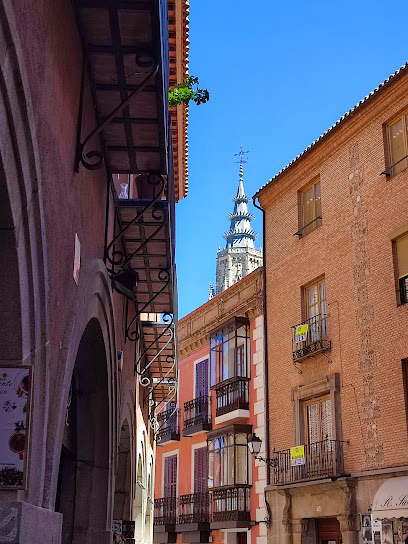
Mirador del Alcázar
Explore the stunning Mirador del Alcázar for breathtaking views of Toledo's historic skyline and rich cultural heritage.
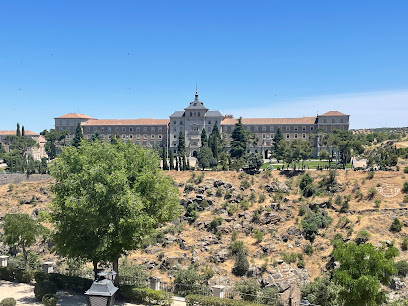
Mirador de la muralla
Discover breathtaking views and rich history at Mirador de la Muralla, Toledo's premier viewpoint for tourists seeking beauty and culture.
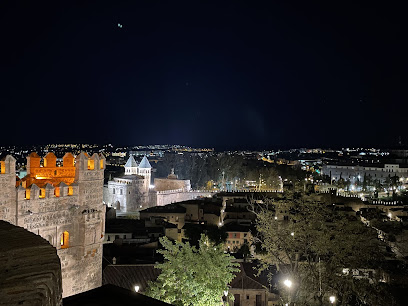
Edificio Alcazar
Explore Edificio Alcazar, Toledo's architectural gem, steeped in history and offering breathtaking views of the ancient city.
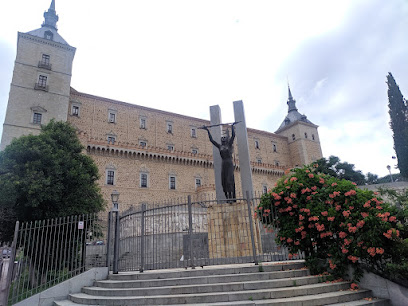
Essential places to dine
Restaurante Venta de Aires
Experience authentic Spanish cuisine at Restaurante Venta de Aires in Toledo - where tradition meets culinary artistry.
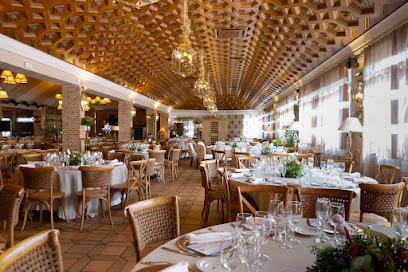
Restaurante Alfileritos 24
Experience authentic Spanish cuisine at Restaurante Alfileritos 24 in Toledo - where tradition meets innovation in every dish.
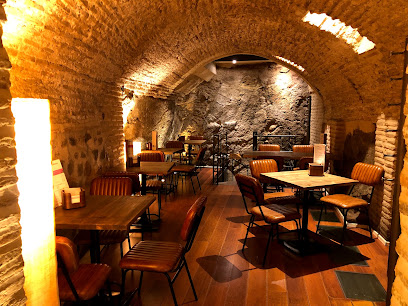
Restaurante Abrasador Toledo
Experience authentic Spanish flavors at Restaurante Abrasador in Toledo - where every meal is a celebration of taste and family.
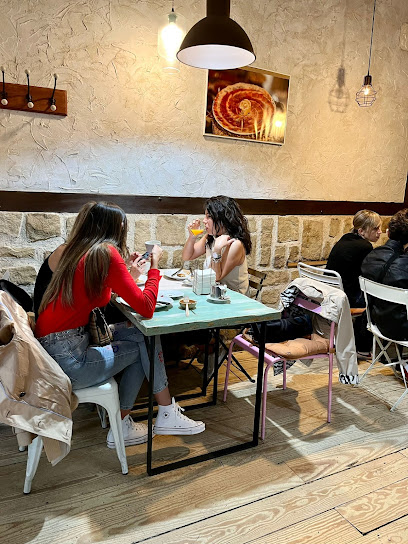
Restaurante Museo de Productos de Castilla-La Mancha
Experience authentic Spanish cuisine at Restaurante Museo de Productos de Castilla-La Mancha in Toledo - where tradition meets flavor.
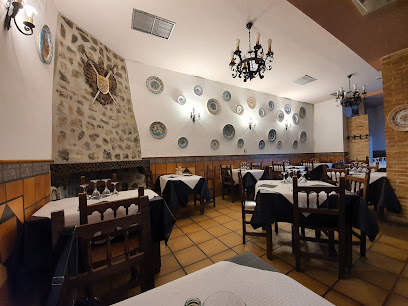
Restaurante La Orza
Experience authentic Castilian and Mediterranean cuisine at Restaurante La Orza in Toledo - where tradition meets culinary excellence.
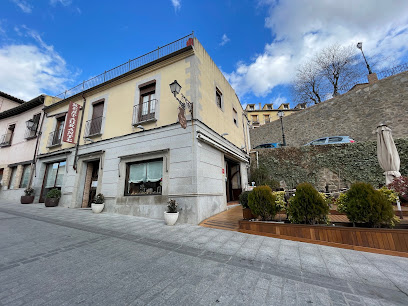
Carlos roof
Discover Carlos Roof in Toledo: where exquisite cuisine meets stunning skyline views for an unforgettable dining experience.
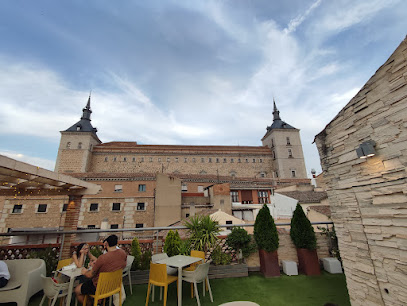
GO ALCÁZAR Restaurante Pizzería
Experience exquisite tapas and gourmet pizzas at GO ALCÁZAR Restaurante Pizzería in Toledo—where tradition meets taste.
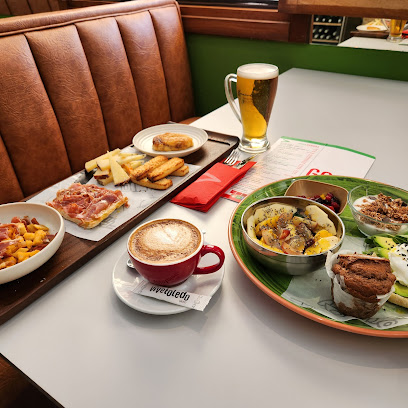
Restaurante Museo Alcázar
Discover Toledo's culinary heritage at Restaurante Museo Alcázar - where every meal is a masterpiece waiting to be savored.

Cigarral de Nuestra Señora del Alcázar
Experience exquisite Spanish cuisine at Cigarral de Nuestra Señora del Alcázar while enjoying breathtaking views over historic Toledo.
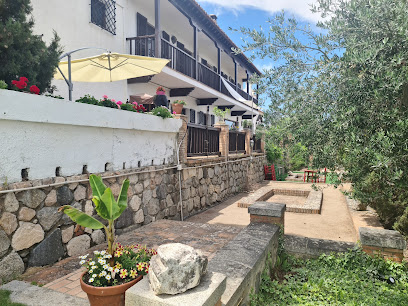
Alfonso VI Bar-Restaurant
Experience authentic Spanish cuisine at Alfonso VI Bar-Restaurant in Toledo - where tradition meets taste in every dish.
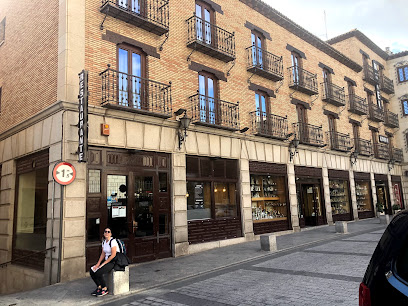
Markets, malls and hidden boutiques
Damasquinados Suárez
Discover the exquisite art of damascene craftsmanship at Damasquinados Suárez in Toledo, where tradition meets elegance in every piece.
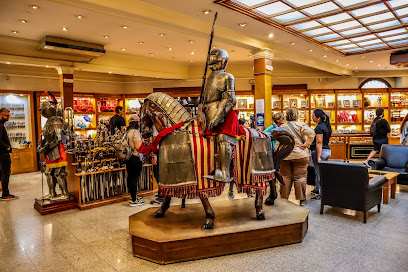
Pilar Prieto
Discover the essence of style at Pilar Prieto, Toledo's premier women's clothing store offering unique fashion and accessories.

Cuerho House of Leather
Explore Toledo's rich leather-making tradition at Cuerho House of Leather, offering handcrafted goods that blend artistry with quality.
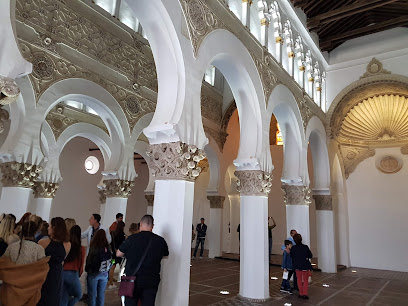
Artesanía González
Explore unique handcrafted souvenirs and local art at Artesanía González, a charming general store in the heart of Toledo, Spain.

Toledo swords and knives Crafts
Explore Toledo's rich history through exquisite swords and knives crafted by skilled artisans in the heart of the city.
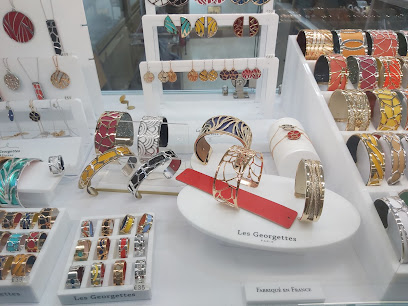
Regalos Torres
Explore Regalos Torres in Toledo for unique gifts and souvenirs that capture the essence of this historic city, perfect for tourists seeking memorable keepsakes.
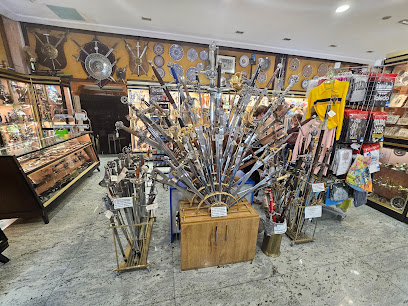
Dtoledo
Explore the exquisite craftsmanship of Toledo at Dtoledo, the premier knife store showcasing traditional blades and swords.
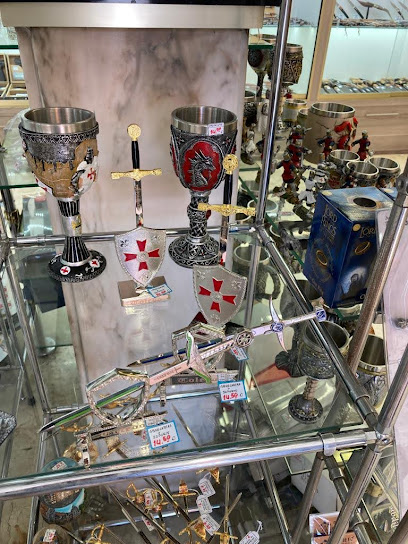
Artesanía Morales
Explore the rich tradition of handcrafted artisan goods at Artesanía Morales in Toledo, a must-visit destination for unique souvenirs.
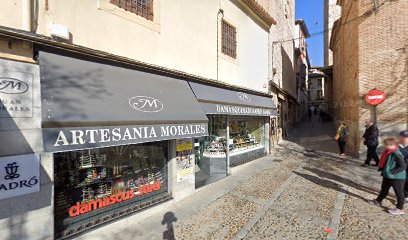
Regalos Alcázar
Explore Regalos Alcázar, Toledo's premier gift shop for unique crafts and souvenirs that embody the city's rich cultural heritage.
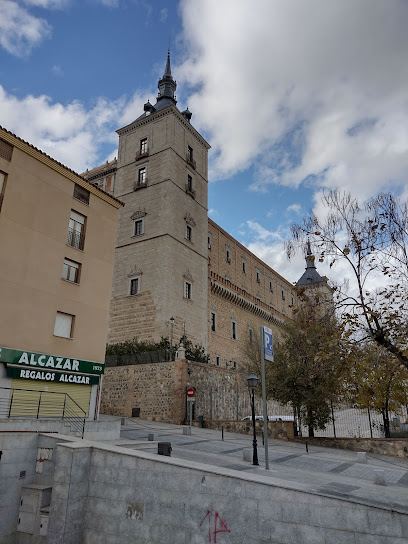
TIENDA ALEGRIA
Explore Tienda Alegría in Toledo for a unique clothing shopping experience that blends local fashion with a vibrant atmosphere.
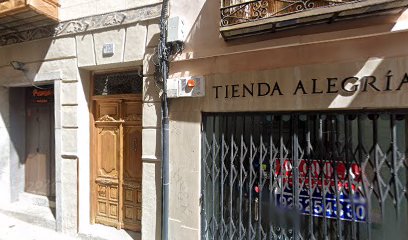
Essential bars & hidden hideouts
Cervecería La Abadía
Discover the vibrant flavors of Toledo at Cervecería La Abadía, a brewpub offering delightful tapas and craft beers in a lively setting.
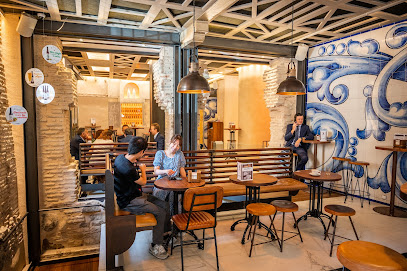
La Malquerida de la Trinidad
Experience the rich culinary heritage of Toledo at La Malquerida de la Trinidad, where grilled delights and crafted cocktails await.

Terraza Miradero
Discover the vibrant atmosphere of Terraza Miradero, a charming bar and cafe in Toledo, perfect for sipping drinks and enjoying local tapas.
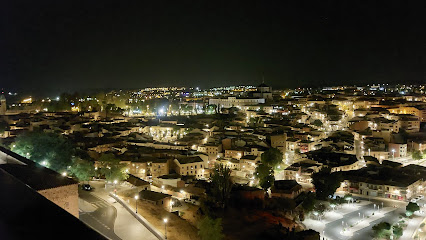
Carlos roof
Experience the culinary charm and breathtaking views of Toledo at Carlos Roof, a bar and restaurant perfect for tourists seeking relaxation and exquisite cuisine.
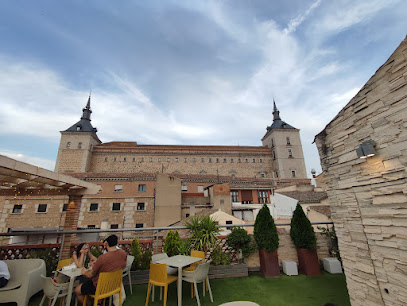
Virtudes Café Bar & Music
Experience the delightful fusion of grill dining and live piano music at Virtudes Café Bar & Music in historic Toledo.
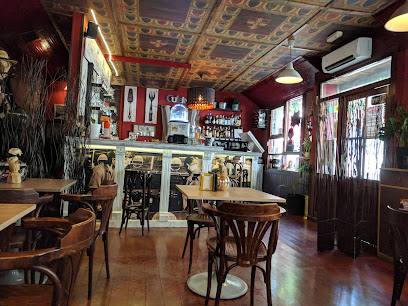
Bar Margot
Experience the vibrant atmosphere and authentic flavors of Toledo at Bar Margot, your go-to bar for tapas and local wines.
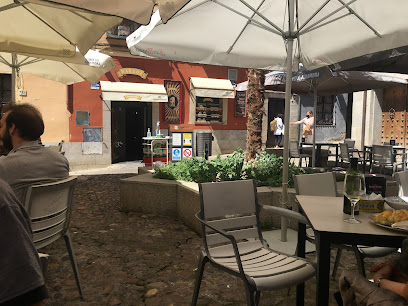
El Rincón de Juan
Discover the flavors of Spain at El Rincón de Juan, Toledo's beloved grill and tapas bar, perfect for a hearty meal or a quick coffee break.
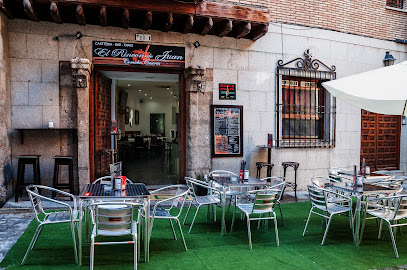
Taberna De Livingstone
Experience the vibrant nightlife at Taberna De Livingstone, a go-to bar tabac in Toledo for cocktails, darts, and local camaraderie.
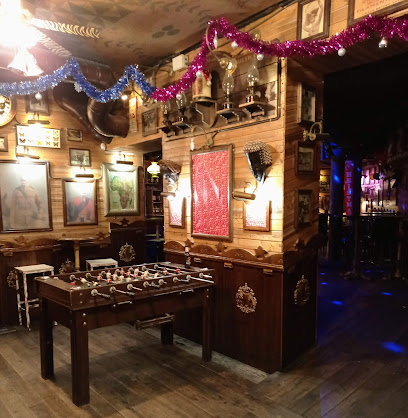
El Picatel
Discover El Picatel, Toledo's vibrant bar renowned for unique tapas and a warm, inviting atmosphere perfect for every traveler.
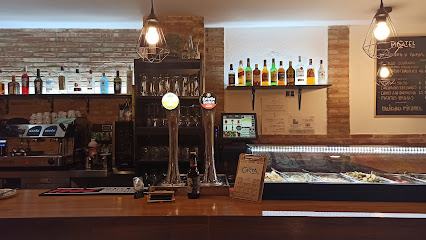
GO ALCÁZAR RESTAURANTE - TAPAS . PIZZERÍA
Experience the vibrant flavors of Toledo at Go Alcázar Restaurante, where traditional tapas and gourmet pizzas come together in a cozy atmosphere.
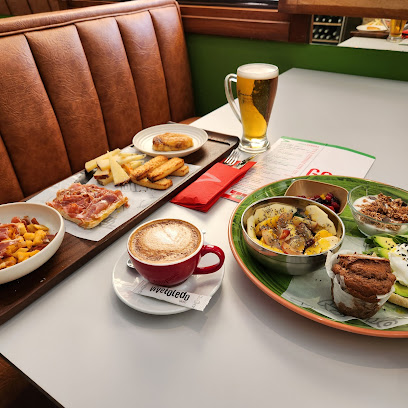
Bar La Divergente
Experience the heart of Toledo at Bar La Divergente, where local flavors and vibrant atmosphere come together in a unique bar setting.
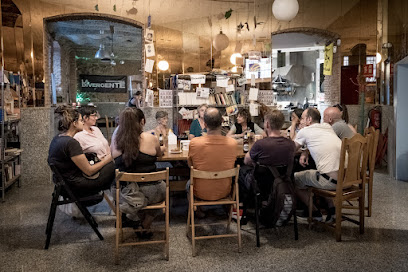
GO ALCÁZAR Restaurante Pizzería
Experience the best of Toledo's gastronomy with delicious tapas and pizza at GO ALCÁZAR Restaurante Pizzería.
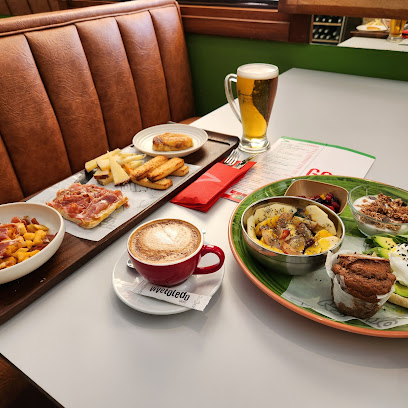
Restaurante Museo Alcázar
Experience the rich flavors of Toledo at Restaurante Museo Alcázar, where history meets culinary excellence in a charming atmosphere.

Bar la antigua
Experience authentic Toledo at Bar la Antigua, where traditional tapas and drinks create a vibrant local atmosphere.

Local Phrases
-
- HelloHola
[oh-lah] - GoodbyeAdiós
[ah-dee-ohs] - YesSí
[see] - NoNo
[noh] - Please/You're welcomePor favor/De nada
[por fah-vor/de nah-dah] - Thank youGracias
[grah-thyahs] - Excuse me/SorryPerdón/Lo siento
[pair-dohn/loh syen-toh] - How are you?¿Cómo estás?
[koh-moh ehs-tahs] - Fine. And you?Bien. ¿Y tú?
[byen. ee too] - Do you speak English?¿Hablas inglés?
[ah-blahs een-glays] - I don't understandNo entiendo
[noh ehn-tyen-doh]
- HelloHola
-
- I'd like to see the menu, pleaseMe gustaría ver el menú, por favor
[may goos-tah-ree-ah behr el meh-noo, por fah-vor] - I don't eat meatNo como carne
[noh koh-moh kahr-neh] - Cheers!¡Salud!
[sah-lood] - I would like to pay, pleaseMe gustaría pagar, por favor
[may goos-tah-ree-ah pah-gar, por fah-vor]
- I'd like to see the menu, pleaseMe gustaría ver el menú, por favor
-
- Help!¡Ayuda!
[ah-yoo-dah] - Go away!¡Vete!
[veh-teh] - Call the Police!¡Llama a la Policía!
[yah-mah ah lah poh-lee-thee-ah] - Call a doctor!¡Llama a un médico!
[yah-mah ah oon meh-dee-koh] - I'm lostEstoy perdido/a
[ehs-toy pair-dee-doh/ah] - I'm illEstoy enfermo/a
[ehs-toy ehn-fehr-moh/ah]
- Help!¡Ayuda!
-
- I'd like to buy...Me gustaría comprar...
[may goos-tah-ree-ah kohm-prar] - I'm just lookingSolo estoy mirando
[soh-loh ehs-toy mee-rahn-doh] - How much is it?¿Cuánto cuesta?
[kwan-toh kwehs-tah] - That's too expensiveEs demasiado caro
[ehs deh-mah-syah-doh kah-roh] - Can you lower the price?¿Puede bajar el precio?
[pweh-deh bah-har el pree-syo]
- I'd like to buy...Me gustaría comprar...
-
- What time is it?¿Qué hora es?
[keh oh-rah ehs] - It's one o'clockEs la una
[ehs lah oo-nah] - Half past (10)Y media (10)
[ee meh-dee-ah (deez)] - MorningMañana
[mah-nyah-nah] - AfternoonTarde
[tahr-deh] - EveningNoche
[noh-cheh] - YesterdayAyer
[ah-yehr] - TodayHoy
[oy] - TomorrowMañana
[mah-nyah-nah] - 1Uno
[oo-noh] - 2Dos
[dohs] - 3Tres
[trehs] - 4Cuatro
[kwah-troh] - 5Cinco
[theen-koh] - 6Seis
[says] - 7Siete
[syeh-teh] - 8Ocho
[oh-choh] - 9Nueve
[nweh-veh] - 10Diez
[dyehth]
- What time is it?¿Qué hora es?
-
- Where's a/the...?¿Dónde está...?
[dohn-deh ehs-tah] - What's the address?¿Cuál es la dirección?
[kwal ehs lah dee-rehk-syon] - Can you show me (on the map)?¿Puedes mostrarme (en el mapa)?
[pweh-dehs mohs-trar-meh (ehn el mah-pah)] - When's the next (bus)?¿Cuándo es el próximo (autobús)?
[kwan-doh ehs ehl proh-ksee-moh (ow-toh-boos)] - A ticket (to ....)Un billete (a ....)
[oon bee-yeh-teh (ah)]
- Where's a/the...?¿Dónde está...?
History of Alcázar
-
The Alcázar of Toledo has its origins in the Roman period, where it served as a fortification due to its strategic hilltop location. Initially, a Roman palace was constructed on this site, which later influenced the design of subsequent structures throughout the centuries.
-
During the 8th century, the Alcázar was transformed by Muslim rulers into a fortress. The Moors expanded its fortifications and integrated advanced architectural techniques, reflecting the cultural and military might of Islamic rule in Toledo. The Alcázar became a critical defensive position during the Reconquista.
-
In 1085, the Christian King Alfonso VI captured Toledo, and the Alcázar was reclaimed. The site became a royal palace, symbolizing the power of the Castilian crown. Its significance grew as it became a center for governance and military strategy in the newly unified kingdom.
-
The Alcázar played a pivotal role during the Spanish Civil War (1936-1939). The Nationalists, under General Moscardó, defended it against Republican forces in a protracted siege. The event became a symbol of nationalist resistance, and its eventual fall solidified the regime's control over Toledo.
-
Post-Civil War, the Alcázar underwent significant restoration and was repurposed as a military museum. Today, it stands not only as a testament to Toledo's tumultuous history but also as a cultural landmark that showcases the city's rich heritage and diverse past, attracting visitors from around the world.
Alcázar Essentials
-
Alcázar is easily accessible from other neighborhoods in Toledo. If you are arriving by train, Toledo's train station is located approximately 2 kilometers from the Alcázar. You can take a taxi or walk to the Alcázar, which takes about 25 minutes on foot. Additionally, several bus lines run from the train station to the city center, where you can transfer to local buses heading towards the Alcázar.
-
Alcázar is compact and best explored on foot. The area is pedestrian-friendly, with many attractions within walking distance. Local buses operate regularly, providing access to other neighborhoods in Toledo. Bicycle rentals are available for those who prefer cycling, and you can find bike lanes in certain parts of the city. Taxis are also an option for longer trips or if you're carrying heavy luggage.
-
Alcázar is generally a safe neighborhood for tourists. However, like any popular tourist destination, it's wise to be cautious. Avoid poorly lit areas at night and keep an eye on your belongings, especially in crowded places like markets. Petty crimes, such as pickpocketing, can occur near major attractions, so stay vigilant. Areas around the bus station can be less secure, particularly at night.
-
In case of emergency, dial 112 for immediate assistance throughout Spain. The local police station is located nearby, and there are several hospitals and medical clinics in Toledo. It's advisable to have travel insurance that covers medical emergencies. For minor health issues, you can find pharmacies in Alcázar where over-the-counter medications are available.
-
Fashion: Do dress modestly, especially when visiting religious sites like the nearby cathedral. Avoid beachwear or overly casual clothing in public places. Religion: Do respect local customs, such as covering your shoulders when entering churches. Public Transport: Do be courteous and offer your seat to the elderly. Don't eat or drink on public transport. Greetings: Do greet locals with a friendly 'Hola' and a smile. Eating & Drinking: Do try local dishes like 'mazapan' and enjoy tapas. Don't refuse food or drink offered to you, as it may be considered impolite.
-
To experience Alcázar like a local, visit the Mercado de San Agustín, where you can find fresh produce and local delicacies. Engage with shopkeepers and ask about local specialties. Don’t miss the Alcázar Museum, which provides deep insights into the city's history. For a unique perspective, take a stroll along the Tagus River at sunset, where you can enjoy beautiful views of Toledo’s skyline.
Nearby Cities to Alcázar
-
Things To Do in Madrid
-
Things To Do in Avila
-
Things To Do in Segovia
-
Things To Do in Salamanca
-
Things To Do in Valladolid
-
Things To Do in Teruel
-
Things To Do in Badajoz
-
Things To Do in Burgos
-
Things To Do in Valencia
-
Things To Do in Bragança
-
Things To Do in Seville
-
Things To Do in Murcia
-
Things To Do in Zaragoza
-
Things To Do in Alicante
-
Things To Do in Lamego












